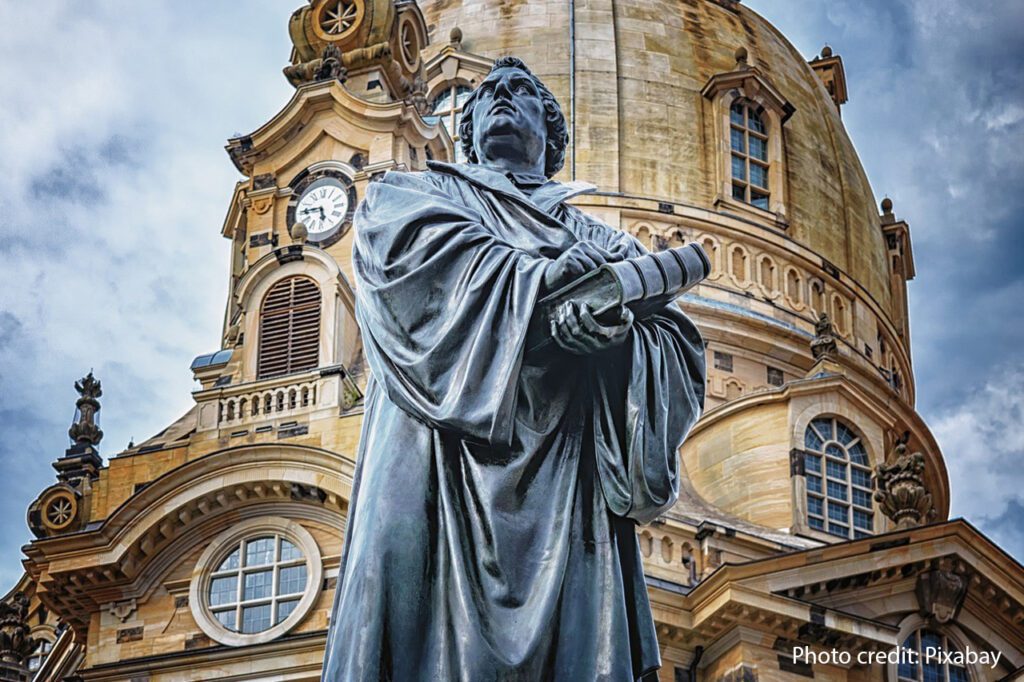
Growing up Protestant, my postgraduate studies led me to a Catholic theology school. Professors openly acknowledged the flaws of some of the early Popes, paving the way for the 15th-century Protestant Reformation initiated by Martin Luther. This article isn’t about religion; its references to religion are merely contextual.
Luther, a bold Catholic priest, defied conventions, facing excommunication and heretic status. In 1517, he penned the “95 Theses,” attaching them to the church door (then a community bulletin board) for academic debate. The advent of the printing press rapidly disseminated Luther’s work. Through a sampling strategy, his innovative ideas gained swift and widespread support, propelling Luther to celebrity status as the inaugural “bestselling author” of the printing press era. Luther’s radical perspectives reshaped Catholicism, giving birth to a new category, Protestantism.
Here is a partial list of what Luther urged his followers to ‘start doing,’ akin to pioneering practices within the industry:
- Embrace the belief that ‘Faith Alone’ (sola fide) is essential for salvation. However, express love by assisting others as Christians.
- Initiate the democratization of religion for the masses. Instead of masses and the Bible solely in Latin (then the language of the nobility), use a simple local language understood by the people. This ultimately enables parents to teach their children about the Bible.
- Allow priests to marry and have families.
- Enable the transferability of priesthood to every believer, including women. This stood in contrast to St. Thomas Aquinas’ perspective, which considered women as an ‘imperfect male,’ reflecting the influence of prevailing Aristotelian cultural and philosophical beliefs of his era.
- Include ordinary people like farmers on equal Godly footing as the Pope in matters of faith and spirituality.
For a balanced perspective, Luther’s ‘faith alone’ was refuted as ‘unbiblical’ by ex-Presbyterian pastor Professor Scott Hahn, emphasizing the historical continuity of Christian beliefs and practices even without Luther. In addition to ‘start doing,’ here is a partial list of what Luther advocated people to ‘stop doing,’ akin to challenging conventional wisdom at that time:
- Cease relying on deeds or works to attain salvation, as righteousness is a gift from God. It is not about what we did for God but what God did for us.
- Discontinue the “sale” of forgiveness and ‘merit’ through the indulgences route (a ‘forgiveness for sale’ practice during Luther’s time) as a revenue model to fund the renovation of churches or the extravagant lifestyle of Pope Leo X at that time.
- End the practice of considering the Pope and traditions as the ultimate Church authority on matters of faith, as it should be based on the Bible (leading to different views about the role of Mary, praying directly to God, not through saints, etc.).
- Abandon the concept of having 7 sacraments; only 2 are in the Bible – Baptism and Communion.
- Eliminate the role of a priest as a “middleman” for confession. Confession can be direct to God.
It is noteworthy that, akin to Protestantism, many new ideas, whether in religious or business contexts, share ten common patterns crucial for the successful adoption of innovation:
- The challenge of existing practices within a particular group (Example: Church “selling” indulgences in the past in exchange for the remission of sins or on behalf of souls in purgatory in the past).
- The discovery of insights or new truths (e.g., Paul’s letter to the Romans in the New Testament argued that both Jews and Gentiles are justified by faith, not by works of the law).
- The introduction of something radically different to address pain points, emphasizing not just ‘doing more’ or ‘doing less’ but initiating industry-first practices and abandoning conventional wisdom (as illustrated by the five examples provided above).
- The introduction of a market-driving new category, especially when the idea faces rejection from incumbent market players (as seen in the case of Protestantism).
- The role of technology in hastening the introduction of a new category (as exemplified by the printing press).
- The strategic timing of a launch during peak dissatisfaction (e.g., “selling” indulgences to fund the 15th-century restoration of St Peter’s Basilica).
- The broad acceptance of the novelty by a specific market segment (such as those dissatisfied with their Catholic experience).
- The attraction of non-customers, beyond brand switchers, to the new category (e.g., the unchurched).
- The response by the incumbent leader to either reaffirm existing beliefs as strengths or undergo partial reform for the better (as observed in the launch of the Council of Trent, the abolishment of indulgence abuses by Pope Pius V, the creation of the Jesuit order, among others, during the Catholic Counter-Reformation).
- The continuous improvement of the novelty (the spin-off to various Protestant groups, like Baptist, Adventist, Anglican, Episcopal, Methodist, Presbyterian, etc., demonstrates innovation from the original idea. However, this doctrinal fragmentation is perceived as a notable weakness in religious spin-offs.).
Despite Catholicism remaining the dominant religion for Christians, close to 40% of over 2 billion Christians worldwide today identify themselves as Protestants. Luther, while intending a reformation of ideas and practices, inadvertently taught us about how to innovate. This underscores that two elements are crucial for innovation: novelty and wide acceptance (or in business terms, commercial success). Luther’s unconventional and inspiring ideas highlight that while common sense is essential for running an organization, launching breakthrough innovation necessitates uncommon sense. Vision requires sensemaking skills, execution of a new idea demands influencing skills, and discovery skills are needed to link everything together—these are the critical five skills of master strategists and innovators. Integrating the grand design of innovation with the skills required to be innovators becomes paramount.
Luther also emphasized the Bible’s centrality in any discussion, highlighting its central theme of love – loving God and others, referred to as neighbors.
Allow me to conclude this article by sharing two interrelated insights on love for our reflections, not only during the start of the holy week season but also in our daily lives.
- The decision to love is most profound when it’s challenging to do so.
- Love, even when it may not seem advantageous for you, can foster spiritual growth in your loved ones.
I wonder how Luther would respond to my concept of love?
*** Josiah Go is the Chairman and Chief Innovation Strategist at Mansmith and Fielders Inc., and is also a co-founder of the Mansmith Innovation Awards. Explore www.mansmithinnovation.com to uncover noteworthy innovators in the Philippines, learn about the awards, and access seminars on game-changing strategies. Josiah chairs the 15th Mansmith Market Masters Conference, where an all-CEO panel will delve into the discussion of innovation skill as part of the “5 Skills of Master Strategists.” Save the date for this insightful event scheduled on May 8, 2024, at The Fifth at Rockwell. Details available at www.marketmastersconference.com


